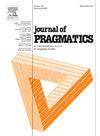The processing of fictional characters: A synthesis of Culpeper's and Pettersson's models
IF 1.8
1区 文学
0 LANGUAGE & LINGUISTICS
引用次数: 0
Abstract
In the last few decades, fictional characterisation has become an issue of an exceptionally big interest in cognitive science. Among many other important works in this area of research, Jonathan Culpeper's cognitive stylistic model is a particularly worthy contribution, which provides pragmatic and cognitive explanations for various insights regarding fictional character processing. This paper proposes that there is a way of further elucidating the picture of characterisation by bringing into Culpeper's model Anders Pettersson's perspective on characterisation, emerging from his cluster conception. The explanation of how this perspective can be added to Culpeper's work will be provided in terms of similarities and differences between their models. My chief aim is to provide an interdisciplinary synthesis of the two models and apply the ideas coming from two different research directions to Sherwood Anderson's story "Mother" from the Winesburg, Ohio cycle.
虚构人物的加工:Culpeper和Pettersson模型的综合
在过去的几十年里,虚构人物塑造已经成为认知科学中一个非常有兴趣的问题。在这一领域的许多重要研究中,乔纳森·卡尔佩珀的认知风格模型是一个特别有价值的贡献,它为关于虚构人物处理的各种见解提供了语用和认知的解释。本文提出,通过将安德斯·佩特森(Anders Pettersson)的特征化观点引入卡尔佩珀的模型,可以进一步阐明特征化的图景。如何将这一视角添加到Culpeper的工作中,将根据他们模型之间的异同提供解释。我的主要目标是对这两种模式进行跨学科的综合,并将来自两个不同研究方向的想法应用于舍伍德·安德森来自俄亥俄州温斯堡的故事“母亲”。
本文章由计算机程序翻译,如有差异,请以英文原文为准。
求助全文
约1分钟内获得全文
求助全文
来源期刊

Journal of Pragmatics
Multiple-
CiteScore
3.90
自引率
18.80%
发文量
219
期刊介绍:
Since 1977, the Journal of Pragmatics has provided a forum for bringing together a wide range of research in pragmatics, including cognitive pragmatics, corpus pragmatics, experimental pragmatics, historical pragmatics, interpersonal pragmatics, multimodal pragmatics, sociopragmatics, theoretical pragmatics and related fields. Our aim is to publish innovative pragmatic scholarship from all perspectives, which contributes to theories of how speakers produce and interpret language in different contexts drawing on attested data from a wide range of languages/cultures in different parts of the world. The Journal of Pragmatics also encourages work that uses attested language data to explore the relationship between pragmatics and neighbouring research areas such as semantics, discourse analysis, conversation analysis and ethnomethodology, interactional linguistics, sociolinguistics, linguistic anthropology, media studies, psychology, sociology, and the philosophy of language. Alongside full-length articles, discussion notes and book reviews, the journal welcomes proposals for high quality special issues in all areas of pragmatics which make a significant contribution to a topical or developing area at the cutting-edge of research.
 求助内容:
求助内容: 应助结果提醒方式:
应助结果提醒方式:


